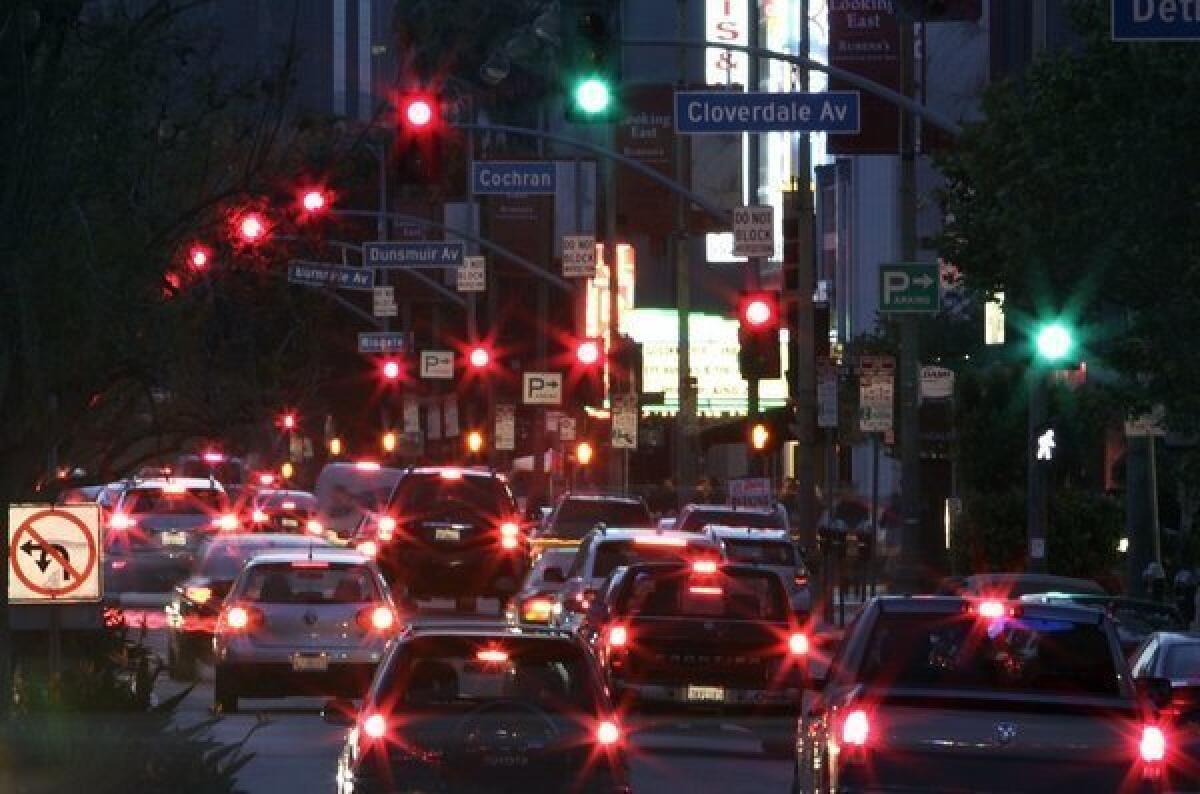Does driving Los Angeles feel quicker to you? LADOT says it should

LADOT, the Los Angeles Department of Transportation, says that L.A. drivers should be seeing improved driving speeds and shorter travel times because of the completion earlier this year of its 29-year $410-million effort to synchronize the city’s traffic lights.
The LADOT report said that drivers could be seeing as much as a 13% improvement in travel speeds, a whopping 32% to 43% decline in travel time delays, and a drop in vehicle emissions of 3% to 4%.
On an anecdotal level, some veteran drivers are saying they have noticed little if any difference.
Dr. Michael Gottlieb, a physician who travels at least four times a week from his Pasadena home to his office in the 5900 block of West Olympic Boulevard said: “No, I haven’t noticed any improvement. It’s no better than it’s ever been.”
But Jonathan Hui, a spokesman for the city’s Transportation Department, said that the system has come online gradually over the years and that citizens would certainly notice the difference if the synchronization wasn’t working.
The massive L.A. system involves 4,398 streetlight intersections that control traffic on 6,000 so-called “center-line miles” of city streets.
The system also includes 25,000 vehicle detection devices and more than 450 traffic cameras.
With the help of the Texas A&M; University Transportation Institute (TTI), LADOT officials have tried to assess what has happened to drive times following the completion of one of the city’s longest-running public improvement projects.
It dates back to the 1984 Los Angeles Olympics, when the initial system was deployed around the Los Angeles Coliseum, according to the “Los Angeles Synchronization Report” released earlier this spring.
The project was finally completed in February, the LADOT said in its report.
The most sophisticated intersection signals are “adaptive,” the LADOT report said, meaning the streetlights respond to real-time traffic volumes.
Other signals are pre-timed, based on long-standing traffic patterns. Still others are “actuated,” and don’t change until a pedestrian button has been pressed at a crosswalk or a car in opposing traffic trips a signal at the intersection.
Drivers still have their doubts.
James Fong, a system technician for AT&T;, says, “I think it’s gotten slower out there.”
Scott Ehrlich, a probation officer, said “Maybe it’s gotten a little better, but it still seems like there are a lot of signals that are not timed well.”
What about you? Have you noticed a difference?
ALSO:
Prius still leading in California car sales
Overseas customers buying a slice of California car culture







